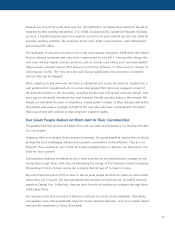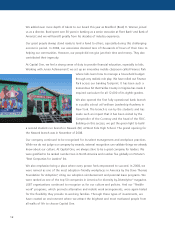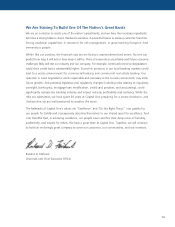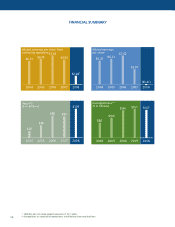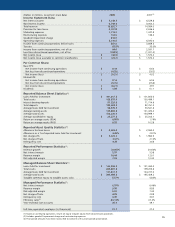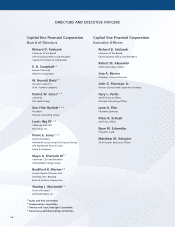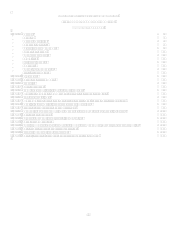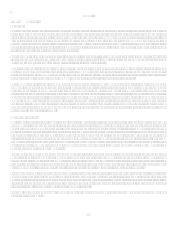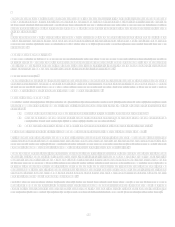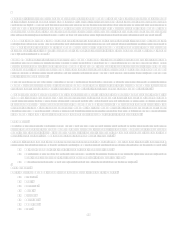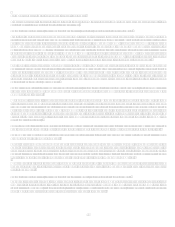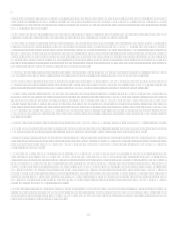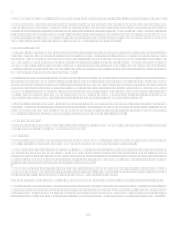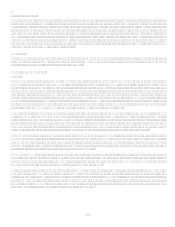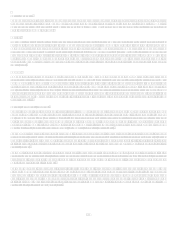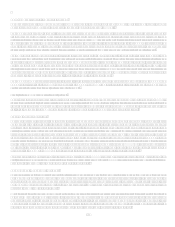Capital One 2008 Annual Report Download - page 22
Download and view the complete annual report
Please find page 22 of the 2008 Capital One annual report below. You can navigate through the pages in the report by either clicking on the pages listed below, or by using the keyword search tool below to find specific information within the annual report. 4
Auto Finance Sub-segment. In the Auto Finance sub-segment, we purchase retail installment contracts, secured by new and used
automobiles or other motor vehicles, through dealer networks throughout the United States. Additionally, we utilize direct marketing,
including the internet, to offer automobile financing directly to consumers for the purchase of new and used vehicles, as well as
refinancing of existing motor vehicle loans. As of December 31, 2008, we are the fourth largest non-captive provider of auto financing
in the United States.
International Sub-segment. The International sub-segment consists of U.K. and Canada credit card lending, extending Capital Ones
national scale lending franchise and providing geographic diversification. In our international sub-segment, we utilize methodologies
and approaches similar to those we use in the U.S. Card sub-segment, offering customized credit card products across the consumer
risk spectrum.
Chevy Chase Bank Acquisition
On December 4, 2008, the Company announced its intention to acquire Chevy Chase Bank F.S.B., the largest retail depository
institution in the Washington, D.C. region in a cash and stock transaction valued at approximately $520 million. On February 13,
2009, the Company received approval from the Federal Reserve to acquire all of the shares of Chevy Chase Bank F.S.B. and certain of
its subsidiaries. The Company expects the transaction to close in the first quarter of 2009.
Geographic Diversity
Loan portfolio concentration within a specific geographic region may be regarded differently based upon the current and expected
credit characteristics and performance of the portfolio. Our loan portfolio is geographically diverse, although we do have commercial
lending concentrations in the New York metropolitan area and Louisiana. See Item 8 Financial Statements and Supplementary
DataNotes to the Consolidated Financial StatementsNote 22 of this form.
Enterprise Risk Management
Capital Ones policy is to identify, assess, and mitigate risks that affect or have the potential to affect our business, to target financial
returns commensurate with the Companys risk appetite, and to avoid excessive risk-taking. We follow three key principles related to
this policy.
1. Individual businesses take and manage risk in pursuit of strategic, financial, and other business objectives
2. Independent risk management organizations support individual businesses by providing risk management tools and
policies, and by aggregating risks; in some cases, risks are managed centrally
3. The Board of Directors and top management review our aggregate risk position and establish the risk appetite
Our approach is reflected in four critical risk management practices of particular importance in todays environment.
First, we recognize liquidity risk as among the critical risks facing financial institutions today. We seek to mitigate this risk
strategically and tactically. From a strategic perspective, we have acquired and built deposit gathering businesses and significantly
reduced our loan to deposit ratio. From a tactical perspective, we have accumulated a very large liquidity reserve comprising cash,
high-quality, unencumbered securities, and committed collateralized credit lines and conduit facilities.
Second, we recognize that credit issues are a frequent cause of financial institution stress and that we are exposed to cyclical changes
in credit quality. Consequently, we try to ensure our credit portfolio is resilient to economic downturns. Our most important tool is
conservative underwriting. In consumer underwriting, we try to anticipate recession and base our underwriting decisions on models
that include economic assumptions at least as conservative as our financial planning assumptions. In commercial underwriting, we
insist on strong cash flow, strong collateral, and strong covenants and guarantees. In addition to conservative underwriting, we
aggressively monitor our portfolio and aggressively collect or work out troubled loans. In our mortgage portfolio, in addition to
standard collection techniques, we modify loans, including principal forbearance, where appropriate, consistent with the general
guidelines in Fannie Maes and Freddie Macs programs.
Third, we recognize that reputational risk is of particular concern in todays turbulent environment. Consequently, our CEO and
executive team manage both tactical and strategic reputation issues and manage our relationships with the government, media, and
other constituencies to help strengthen the reputations of both Capital One and our industry. This includes taking public positions in
support of better consumer practices in our industry and, where possible, unilaterally implementing those practices in our business.



